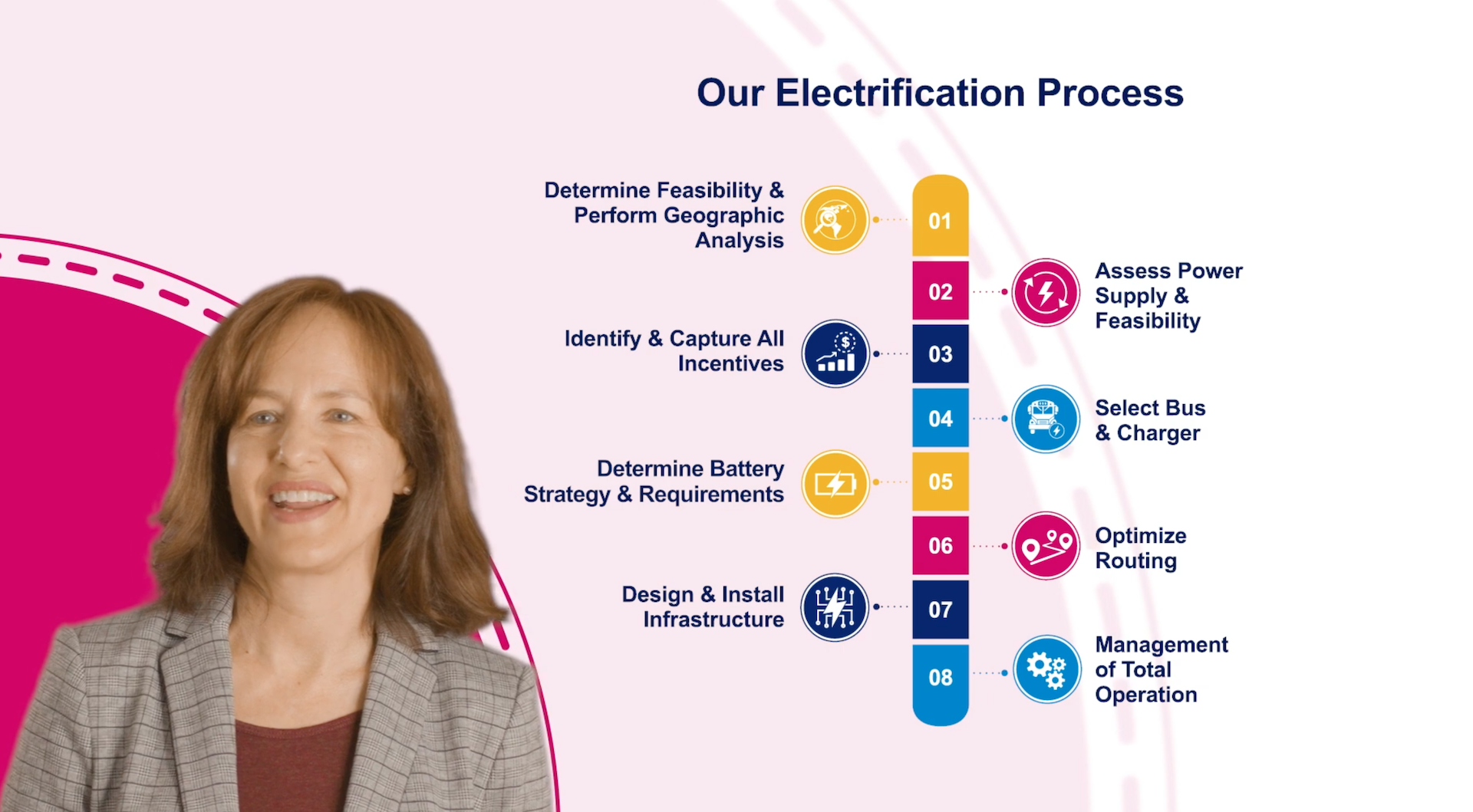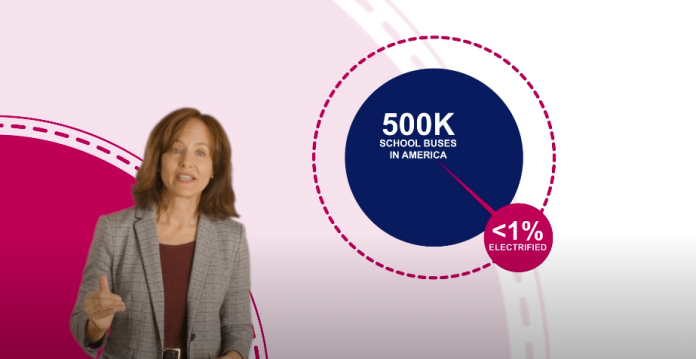Knowing the potential obstacles to implementing electric school buses is as important if not more so than realizing the benefits.
That was the advice Wednesday morning from Claire Miller, the senior vice president of strategy, business development, marketing and communications at First Student, as she commenced day two of the virtual Green Bus Summit. She discussed the various factors school districts need to be asking when determining an electric school bus transition and shared information on the company’s and partner NextEra Energy’s plans to electrify 43,000 school buses across North America.
“Electrifying vehicles is the right thing to do, but the road to get there is complex and expensive,” Miller commented, adding that First Student’s partnership with NextEra has led to the creation of a comprehensive plan and process for school districts to follow when considering electric school buses.
Miller explained that electric school buses decrease the carbon footprint, create a better environment for students both on and off the bus, and help school district officials demonstrate the values they place on their surrounding community. Plus, she said that more regulations and legislation are on the horizon for electric buses, so preparing for and buying electric buses now will only better prepare school districts for the future.
Yet despite all the positives of electric vehicles, adoption is lacking. She noted that few school districts nationwide have electric school buses and many that do only have between one to three buses for piloting purposes. Miller shared that out of the 500,000 school buses in North America, only one percent is currently electrified.
She attributed slow adoption to both cost and complexity. Miller focused on how to break down the complexity with an eight-step process developed by First Student and NextEra.

The first step is to determine feasibility and performance in geographic analysis. She advised attendees to look at factors such as geography, climate, weather, terrain, and the available power grid as well as funding to determine if electric school buses are right for their district. Once the analysis of those variables is complete, she said it’s time for districts to assess power supply and feasibility.
“The distance from an adequate power supply can be a tremendous cost difference,” she explained, adding that facility construction, resiliency planning, utility rates, future fleet needs, and vehicle-to-grid readiness should all be considered. She also advised school districts to consider space constraints, as chargers and infrastructure can take up quite a bit of room.
Next, Miller advised school districts to identify and capture all incentives, which includes finding all available state and federal funding for electric vehicles. She noted that transportation directors should consider hiring a consultant to identify all available grants and funds. With grants, she noted that continuous reporting might be required.
After determining available space and funding, she said it’s time to select the bus and charging system. Miller noted there are many manufacturers to choose from, and school districts should consider total cost of ownership, cost of the bus, cost of electricity as a fuel equivalent, battery requirements, infrastructure requirements, maintenance and safety, and fleet retirement schedule.
She further explained that costs vary by location, so again school districts should consider climate, geography and terrain when selecting the electric school bus that’s right for them.
Step five is to determine battery strategy and requirements. Miller said that because an electric school bus battery makes up 30 to 50 percent of the cost of the bus, a battery strategy can have a major impact on operations, costs and revenue.
She said transportation leaders should take the time to consider battery capacity and range, replacement, warranties, and leasing.
Related: Agreement Reached to Sell School Bus Contractor First Student
Related: More Federal Funds Aimed at Zero-Emissions School Buses
Related: Transportation Expert Outlines Unprecedented Federal Green School Bus Funding Opportunities
Related: School Bus a Focal Point of Biden’s American Jobs Plan
Related: EPA Awards $10.5M in Diesel School Bus Replacement Grants
Related: Blue Bird CEO Horlock Advises Industry to Prioritize Cleaner School Buses
Determining the route the electric school bus would be placed on can also play a role in saving the district money. Miller said that yellow bus routes are ideal for electrifying one’s fleet, as they are normally short and predictable. She cautioned that longer routes could pose challenges and could require a larger battery. In order to maximize the buses’ life span and total cost of ownership, Miller said districts should understand fleet dynamics, identify ideal routes, and optimize routes for seasonal price differences in electricity.
Next, Miller advised school districts to design and install infrastructure, which she noted is no small task and can create quite a long lead time. She added that infrastructure investment is anywhere from $10,000 to $30,000 per bus.
The last step is managing an electric bus, which includes overseeing staff, training, routing, maintenance, charging, and grid services. This also includes staying in compliance with safety requirements, she said.
Miller concluded that if school districts are considering large fleet electrification or even piloting a couple of buses, the First Student roadmap could help with complexity.
Later Wednesday, First Student representative also discussed the cost of an electric school bus versus a diesel bus.














